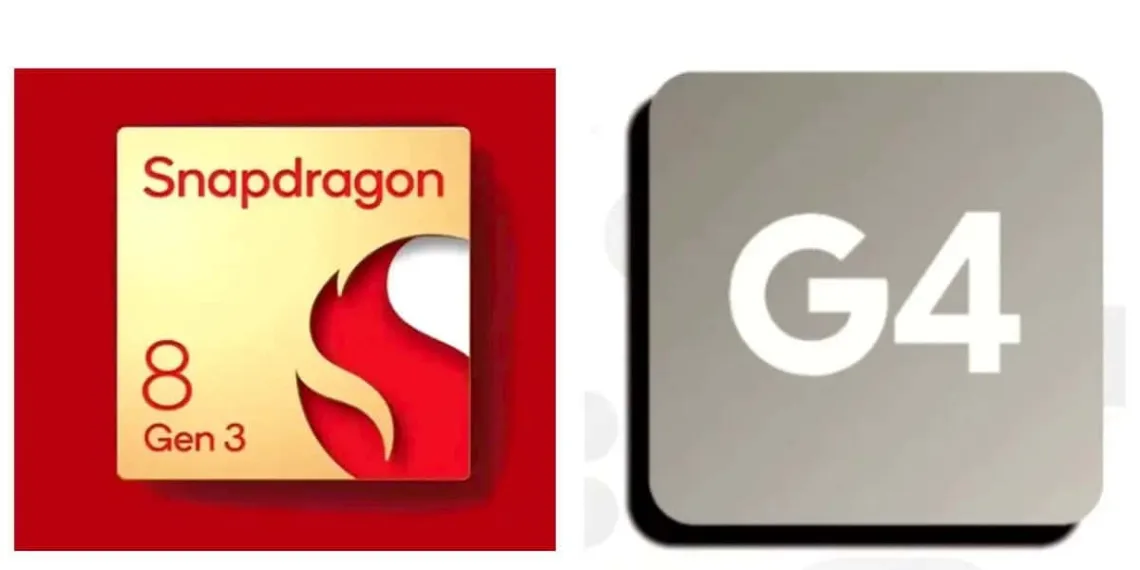Google‘s latest Pixel 9 series powered by the Tensor G4 chip has proven to be highly performing and done exceptionally well in the competitive battery tests. But not nearly as capable as Qualcomm’s Snapdragon 8 Gen 3, against which the Tensor G4 lags behind. Both chips have been through various benchmark tests such as Geekbench, AnTuTu, and 3DMark to see which performs better than the other.
Table of Contents
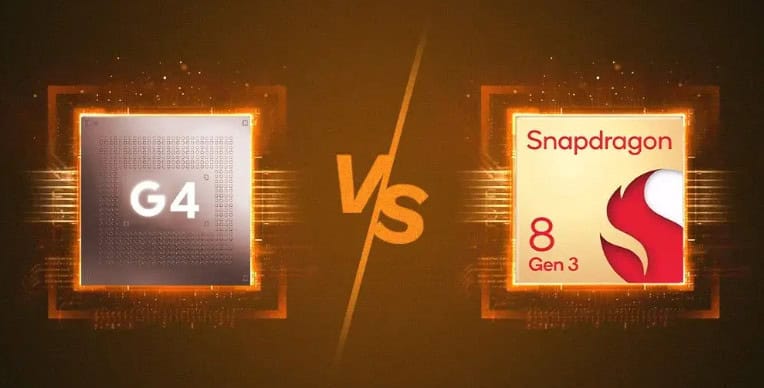
Tensor G4 vs Snapdragon 8 Gen 3
The Tensor G4 comes with an octa-core CPU which includes 1x 3.10GHz Cortex-X4, 3x 2.60GHz Cortex-A720, and 4x 1.95GHz Cortex-A520 configurations in terms of specifications. Conversely, the Snapdragon 8 Gen 3 has a slightly different eight-core setup with 1x 3.3GHz Cortex-X4, 3x 3.2GHz Cortex-A720, 2x 3.0GHz Cortex-A720, and 2x 2.3GHz Cortex-A520.
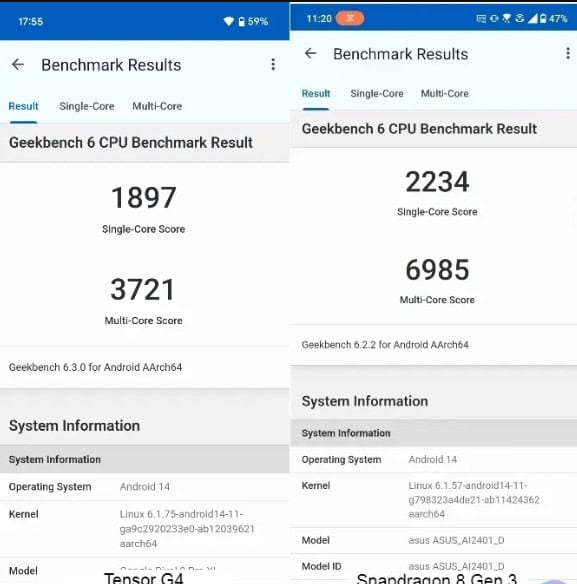
The Tensor G4 is built on Samsung’s 4nm process, while the Snapdragon 8 Gen 3 benefits from TSMC’s 4nm process technology, which contributes to its superior performance. The GPU on the Tensor G4 is the Mali-G715 MC7, running up to 940MHz, whereas the Snapdragon 8 Gen 3 is equipped with the Adreno 750.
The benchmark results illustrate a notable difference in performance. For comparison, the Tensor G4 managed 1,897 in single-core and 3,721 on multi-core tasks performed by Geekbench v6 while Snapdragon 8 Gen scored a whopping 2,234 on single-core and 6985 on multi-core.
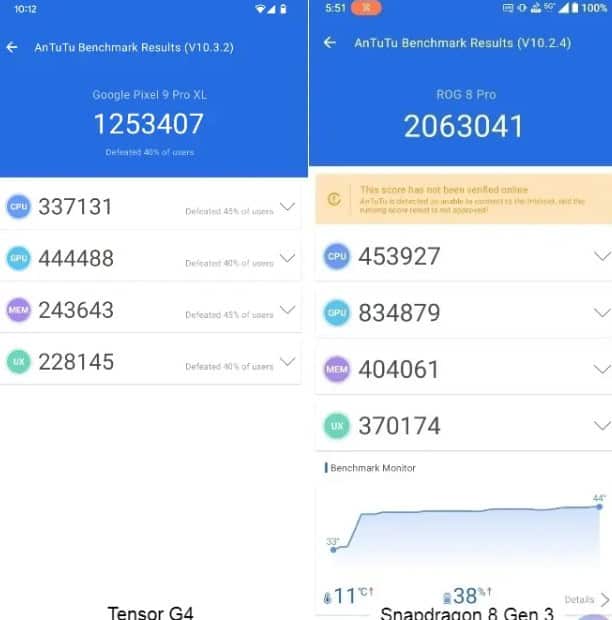
This marks an 18% advantage in single-core and a 46% lead in multi-core performance for the Snapdragon 8 Gen 3. Some of the differences here are likely down to the fact that Snapdragon 8 Gen 3 is built on TSMC’s more advanced and power-efficient 4nm process compared with Tensor G4, which uses an older Samsung-made node.
AnTuTu benchmarks also show the Snapdragon 8 Gen3’s lead, it racked up a score of 2,063,041 to the Tensor G4’s 1,253,407. That equates to about a 40-percent discrepancy, showing up most noticeably in GPU performance where the Snapdragon’s Adreno 750 beats out the Mali-G715 on Tensor G4 by a wide margin.
One more is the 3DMark Wild Life Extreme Stress Test which puts Snapdragon 8 Gen 3 way ahead. It gets 5,136 at its best loop score and a low of 2,697 with the stability rating weighing around 52.9%. By comparison, the Tensor G4 received ratings of 2,590 and 1,525 with a stability of 58.9%. Despite its higher stability, the Tensor G4’s GPU performance is still significantly behind the Snapdragon 8 Gen 3.
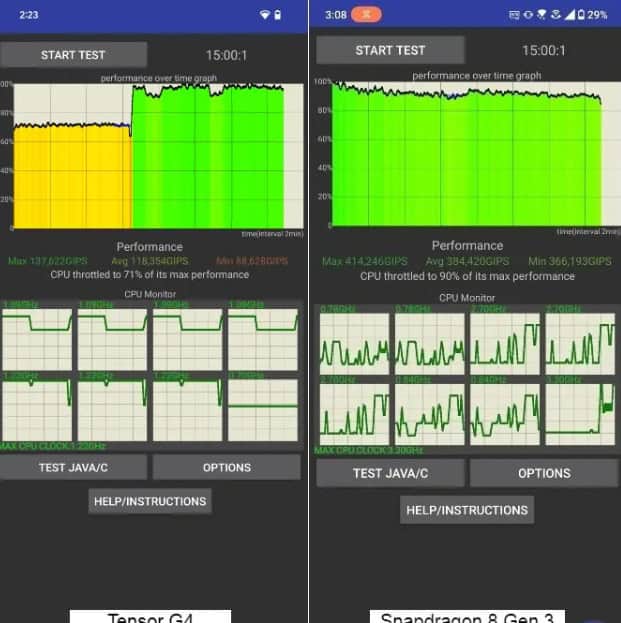
In the Geekbench AI benchmark, while the Tensor G4’s TPU excels in Half Precision and Quantized tests, it lags in Single Precision compared to the Snapdragon 8 Gen 3’s Hexagon NPU. Overall, Snapdragon 8 Gen 3’s CPU, GPU, and AI performance consistently outperform the Tensor G4, with scores 30-40% higher.
Lastly, in 5G connectivity tests, the Tensor G4’s Exynos 5400 modem delivers a peak download speed of 174.8 Mbps, whereas the Snapdragon X75 modem reaches up to 513 Mbps. The Tensor G4 does outperform in upload speeds, achieving 35.1 Mbps compared to the Snapdragon 8 Gen 3’s 5.47 Mbps.
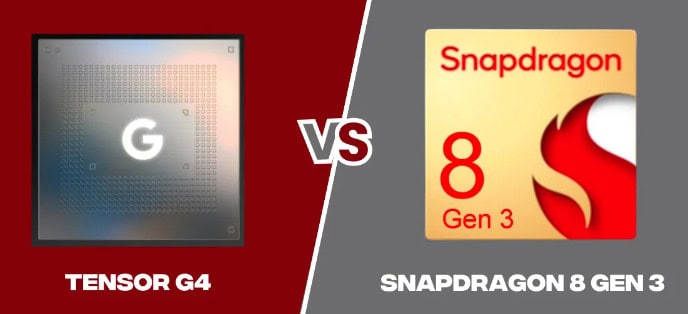
In summary, the Snapdragon 8 Gen 3 surpasses the Tensor G4 across all key performance metrics, including CPU, GPU, and 5G connectivity. For users prioritizing high performance, the Snapdragon 8 Gen 3 is clearly the better choice.
FAQs
Which chipset performs better in benchmarks, Tensor G4 or Snapdragon 8 Gen 3?
The Snapdragon 8 Gen 3 outperforms the Tensor G4 in benchmarks, showing superior CPU, GPU, and AI capabilities.
How do the 5G modems compare between Tensor G4 and Snapdragon 8 Gen 3?
The Snapdragon 8 Gen 3’s 5G modem offers faster download speeds (up to 513 Mbps) compared to the Tensor G4’s modem (174.8 Mbps).

